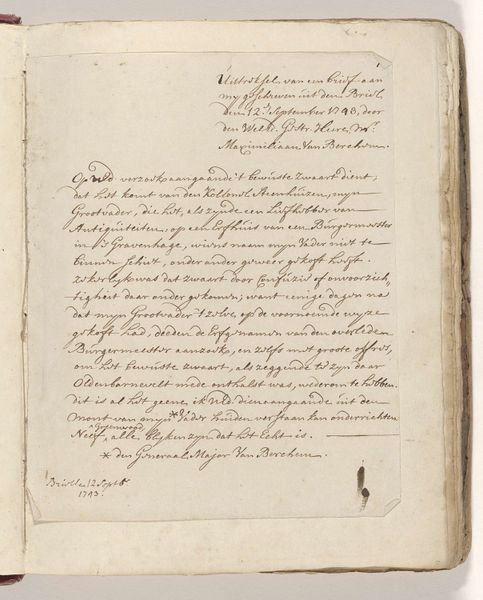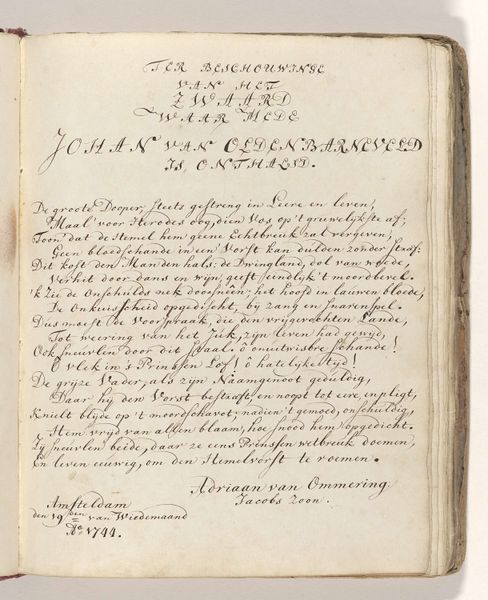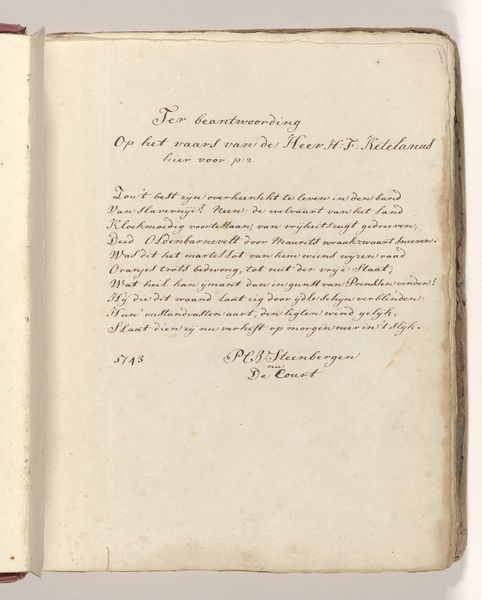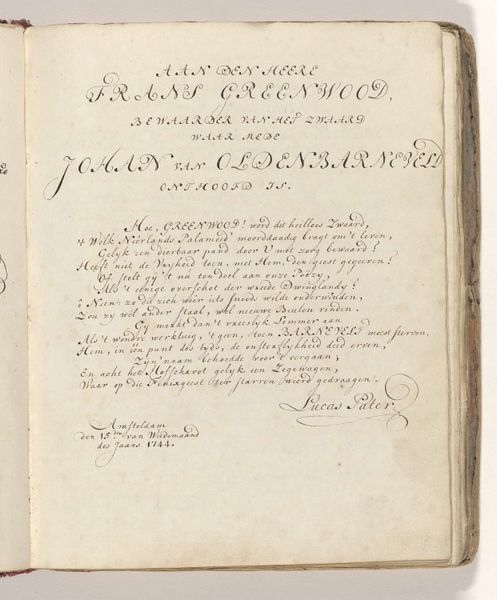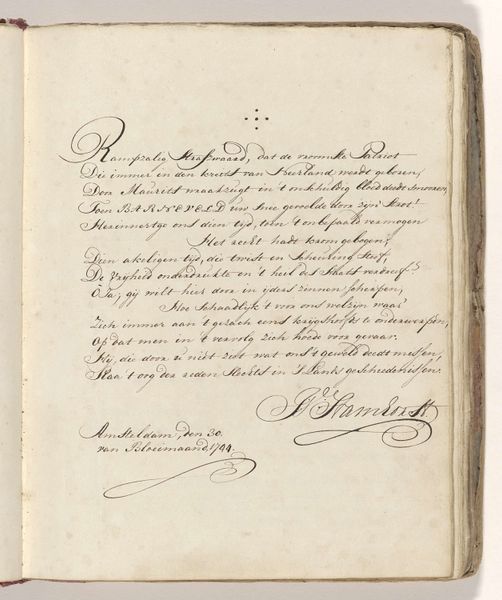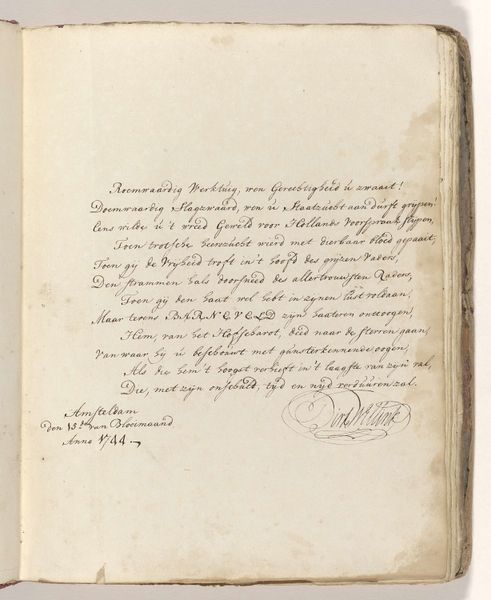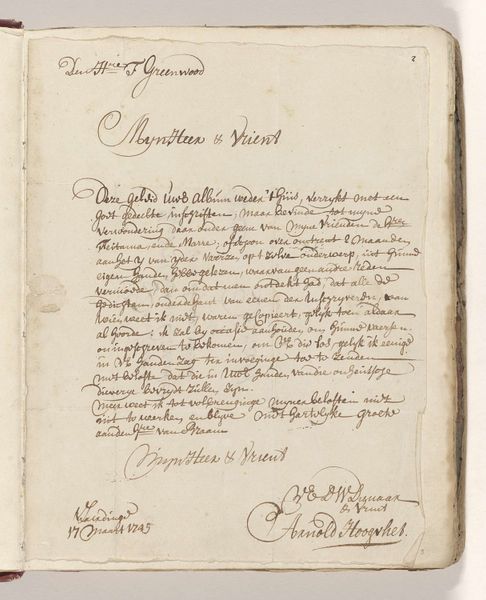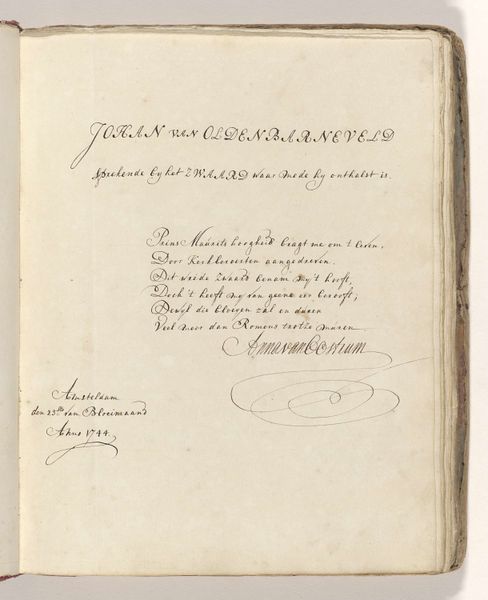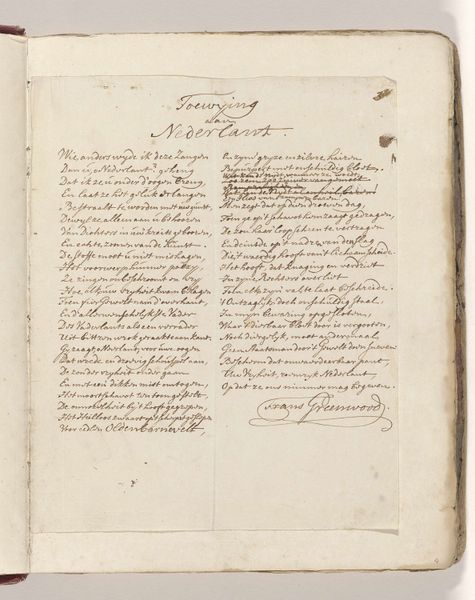
Gedicht op het zwaard waarmee Johan van Oldenbarnevelt in 1619 zou zijn onthoofd Possibly 1744 - 1746
0:00
0:00
drawing, paper, ink
#
drawing
#
medieval
#
paper
#
ink
#
calligraphy
Dimensions: height 275 mm, width 220 mm
Copyright: Rijks Museum: Open Domain
Editor: This work is a drawing in ink on paper, made possibly between 1744 and 1746, titled "Poem on the sword with which Johan van Oldenbarnevelt was allegedly beheaded in 1619," attributed to A. Hobrink. The calligraphic style feels almost like a medieval manuscript, evoking a sense of historical gravity. What visual echoes do you find most compelling here? Curator: The script itself speaks volumes, doesn't it? Each curve, each flourish… Consider how calligraphy, especially when deployed to memorialize an event like this alleged beheading, elevates the word to the level of symbol. This isn't just writing; it's a visual encoding of history, trauma, and perhaps even a yearning for justice. Do you see how the visual weight of certain words or phrases affects your interpretation? Editor: I do. The "Hobrink" signature is the most stylized element. Is it drawing attention to the artist in a similar way, making the author more of an interpreter of a symbol than a simple transcriber? Curator: Exactly. The flourish of the signature emphasizes the artist’s presence and role in transmitting this cultural memory. Think of it as a kind of visual echo chamber, where the story of Oldenbarnevelt resonates through Hobrink's hand, and now through our own gaze. Consider how this image carries echoes of not just the beheading itself, but also the enduring power of symbols to stir emotions and maintain connections to the past. Does this script remind you of anything particular? Editor: It's interesting to think about cultural memory being so meticulously scripted. The past almost looks... constructed through the present? Curator: Precisely. This work illuminates how symbols carry weight across time, reflecting and refracting cultural values with each retelling and reinterpretation. It suggests the past is never truly fixed, but rather a constantly evolving narrative shaped by those who choose to remember. Editor: Seeing it as a construction gives me a new appreciation for calligraphy beyond aesthetics, its connection to history. Thanks for opening my eyes.
Comments
No comments
Be the first to comment and join the conversation on the ultimate creative platform.

